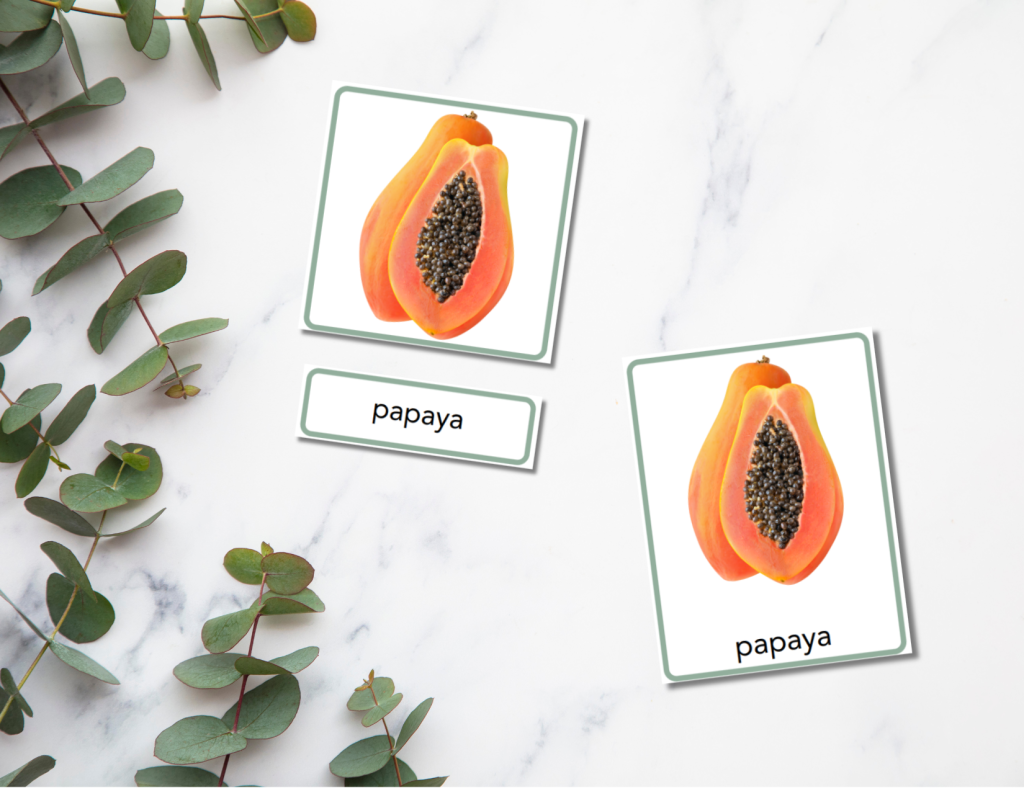
In the Montessori approach, reading is taught in a hands-on, child-centered way that builds a deep understanding of language. Whether your child is just beginning to explore sounds or is ready to start reading words, Montessori provides a natural progression that nurtures their development.
If you’re new to Montessori, don’t worry! Here’s a simple guide to help you understand how to teach reading the Montessori way—and it all starts with building foundational language skills.

Before children can read, they need to build a strong vocabulary. Montessori introduces new words through nomenclature cards, also known as matching cards. These are simple picture cards that allow your child to explore a variety of different vocabulary. You can learn more about this presentation (and find a code for a free nomenclature card download) here.

Try this at home:
In Montessori, learning to read starts with sounds, not letters. Children are introduced to phonetic sounds (like /m/ for “m” or /s/ for “s”), which helps them understand how words are built from sounds. We call this phonetic awareness—and it’s the key to unlocking reading.
How to Practice Phonetic Sounds:
Once your child understands that sounds build words, they’re ready for three-part cards, a popular Montessori material that takes the matching concept further. Each set of three-part cards includes a picture, a label, and a control card (the picture with the label attached). We’ve written a detailed description of how to use these cards- you can find it here.

Here’s how it works:
Why Three-Part Cards Help: This activity engages multiple senses—visual, tactile, and auditory—making it easier for children to grasp the concept of reading. It also offers a fun, hands-on way to practice early reading skills.
As your child masters phonetic sounds and begins recognizing words, they’ll naturally progress toward reading. In Montessori, this step happens gradually and without pressure. The focus is on joyfully discovering the relationship between sounds and letters, and your child will begin reading simple, phonetic words like “cat,” “dog,” or “mat.”
Try this at home:
Montessori’s method is designed to meet each child where they are, allowing them to explore language at their own pace. By focusing on sounds, matching, and hands-on activities like nomenclature and three-part cards, children naturally transition from learning words to reading them.
Ready to Start? Whether you’re just starting with sounds or moving toward building words, Montessori provides an intuitive, engaging way for children to develop their reading skills. Try incorporating some of these activities at home, and remember that learning to read is a joyful journey, not a race!
Copyright © 2024-2025 The Montessori Studio | Site Crafted by Felicity Creative